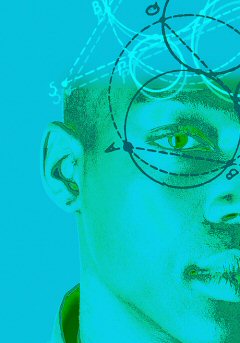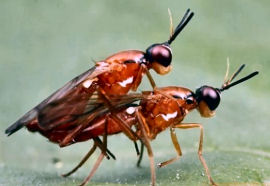
Using a virtual pendulum and its real-world counterpart, scientists at the University of Illinois (UI) have created the first mixed reality state in a physical system. Linking the systems using “bidirectional instantaneous coupling”, each pendulum “sensed” the other, their motions became correlated, and the two began swinging as one. “In a mixed reality state there is no clear boundary between the real system and the virtual system,” explained UI physicist Alfred Hubler. “The line blurs between what’s real and what isn’t.”
In the experiment, Hubler connected a mechanical pendulum to a virtual one that moved under established equations of motion. The researchers sent data about the real pendulum to the virtual one, and sent information about the virtual pendulum to a motor that influenced the motion of the real pendulum. When the lengths of the two pendulums were dissimilar, they remained in a dual reality state of uncorrelated motion and both soon came to rest.
But when the lengths of the pendulums were similar, they “suddenly noticed each other, synchronized their motions, and danced together indefinitely,” said Hubler. In this mixed reality state, the real pendulum and the virtual pendulum moved together as one.
“Computers are now fast enough that we can detect the position of the real pendulum, compute the dynamics of the virtual pendulum, and compute appropriate feedback to the real pendulum, all in real time,” said Hubler, who will describe the experiment at the annual meeting of the American Physical Society on March 10-14.
Phase transitions, where the boundary between reality and virtual reality disappears, could present problems in future systems that meld the two, says Hubler, and a better understanding of this potential phase transition is needed. “As virtual systems continue to improve and better approximate real ones, even weak couplings – like those between real and virtual pendulums – could induce sudden transitions to mixed reality states,” he concluded.
Related:
Of Pendulums And Predation
Leaving The Body Behind
Delusions And Mental Illness








Comments are closed.